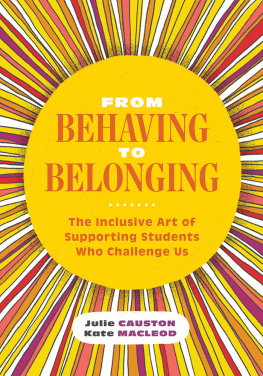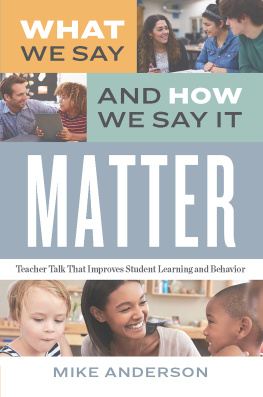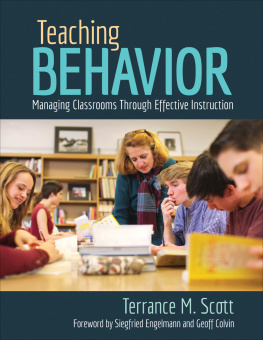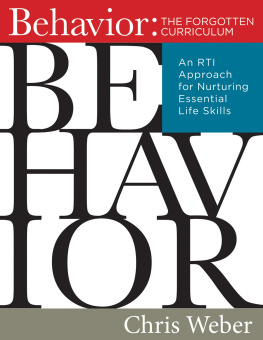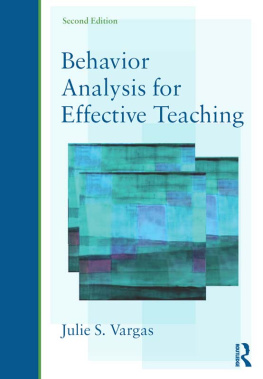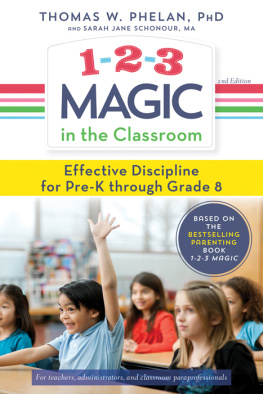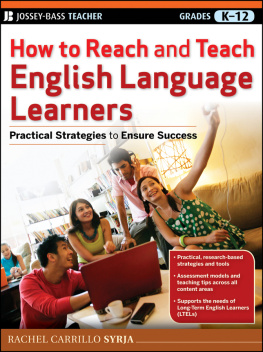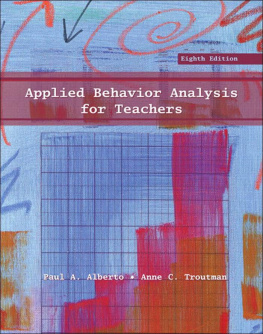Contents
Guide
Pages

ASCD MEMBER BOOK
Many ASCD members received this book as a
member benefit upon its initial release.
Learn more at: www.ascd.org/memberbooks
A Note on Authorship
....................
Authorship is traditionally listed in order of contribution to the piece. However, to honor the innovative, collaborative, and supportive nature of our professional relationship and friendship, we have listed authorship alphabetically.
Introduction
....................
Love and Education: How Did We Get Here?
We decided to write this book together as a way to invite teachers to explore the practice of teaching and supporting students from a place of love. Every year, we conduct hundreds of workshops and presentations with administrators, educators, and parents around the country to help them develop loving and inclusive approaches to support diverse students. We wanted to share practices, stories, and tools from our experiences as people committed to teaching and leading schools from the heart.
We understand that it may seem radical for us to use words like love, compassion, and heart when we talk about behavior and discipline. However, we feel emboldened not only because the concept of love in education is not new but also because neuroscientists and biologists have begun to use this very same language in their research as they learn more about the significant impact love and compassion have on the human mind and body. Our brains are constantly forming and changing throughout our lives, and the human mind is particularly impressionable when we reach school age and adolescence. Educators, therefore, have the power to shape and change student brains at critical times in their lives. The compassionate words and actions we model and the heartfelt strategies we practice with our students can help shape who they are and, eventually, who they will become.
Many teachers and administrators, at their core, believe in teaching from the heart and leading with love. Yet they don't always know how teaching from the heart translates into effective supports and practices for working with students who exhibit challenging behavior. Over the years, we have drawn from incredible scholars and thinkers (such as Alfie Kohn, Bill Ayers, and bell hooks), expert practicing educators, wise and intuitive students, and formalized approaches (such as restorative practices, humanistic behavior supports, and social-emotional learning) to turn an educator's belief in love into actionable, practical, heartfelt practices that work to heal.
Why Do We Teach?
Because we have the incredible power and privilege to help shape student brains, it is critical that we ask ourselves the following questions: "What do we want for our students?" and "Who would we like to help them become?"
We have thought about this question long and hard, and we wanted to share our thinking with you as you begin to approach the question for yourself. We, Kate and Julie, teach because we believe we can
- Create inclusive and sacred environments where every one of our students can feel safe, valued, and loved.
- Encourage possibility, transformation, and creativity.
- Promote compassion and belonging in our students and communities.
- Build a society in which we celebrate the diversity of humanity.
- Help every human reach an even fuller version of their potential.
We also teach because we are hopeful and intent on living a life that aligns with our values. We teach because, although changing systems and communities can be daunting and seemingly impossible, we believe change begins with us.
And, above all else, we teach from a place of love.
Teaching Is Hard
Practicing love and compassion in education isn't always easy, and we are not pretending to sugarcoat the daily realities of a teacher. We know that educators are tasked with immeasurable work and incredibly challenging situations. You must be both generalists and specialists and be prepared to teach reading, writing, arithmetic, a variety of content areas, life skills, communication and collaboration skills, socioemotional skills, and remedial skills. You must meet national and state standards and help your students achieve on standardized assessments you may or may not agree with philosophically. You must be guides, inspirations, nurturers, comforters, critics, comedians, gurus, therapists, and advocates. You must show up every day, in every way, for each and every one of your students.
Educators must also come prepared to address students' fears, concerns, hearts, and minds. In recent years, educators have arrived at school, heartbroken themselves, to talk to their students about mass shootings at Parkland High School, a Pittsburgh synagogue, an Orlando nightclub, and a church in Charleston. Educators have shown up to discuss national movements and traumas connected to #BlackLivesMatter and #MeToo. And educators have shown up to listen to and support students dealing with community and personal issuesa bomb threat at the local high school, a young boy who lost his mother to breast cancer, or a student bullied for her transgender identity.
But let us not forget that educators also have the amazing opportunity to come to school and celebrate and experience joy with studentsand to practice and teach kindness, love, and compassion. Educators such as you are there to give a student a hug after her first typed communication on her iPad and share a goofy dance with students at graduation. Educators such as you take a moment to help a student understand her anger and let her know they are there to support her no matter what. Educators such as you are there to shed happy tears when 10th graders present community action projects about ending homelessness. And you are there to show students how to spread kindness and gratitude to one another at the end of a hard day or a wonderful day.
Throughout all this joy, pain, and love, if we are to use a heartfelt approach that draws on love, we must also face our triumphs and failures with kindness and compassion for our students and ourselves. We must reflect on our bravest moments and our most vulnerable ones. We must consider our language and our actions with our most challenging students. We must consider how to push back against systems or schools that do not align with our values or educational philosophies. And we must always ask, "How can we do this better tomorrow with more love and compassion?"
Throughout this book, we will ask you to practice the radical act of reclaiming your classroom as a place of love. We will ask you to consider new ways to approach your students with love and to teach them, with words and actions, the new types of learning and becoming that can occur when we bring love and education together.
Before reading on to the next section, we want you to take some time to answer the question of why you teach (see Figure 0.1). This will help ground and focus you before you dive into the perspectives, tools, and "how-tos" of our approach. Please be sure to reflect on all the amazing, artful, change-making work you take part in every day as a teacher. We encourage you to write or draw your response. Throughout this book, we will ask you to engage your learning in various ways with questions, reflections, and activities. We encourage you to dedicate a journal to use in connection with this book. 

